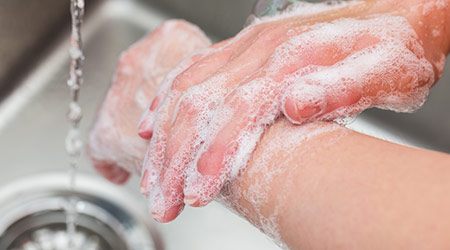
Joint Commission will now cite individual hand-hygiene failures
Hand hygiene is widely considered to be the most important intervention for preventing hospital-acquired infections
January 17, 2018
Topic Area: Infection Control
Recent Posts
 How Efficiency Checklists Help Hospitals Save Energy, Water and Money
How Efficiency Checklists Help Hospitals Save Energy, Water and Money
Keith Edgerton explains how a simple, systematic tool can help healthcare facilities identify savings, support sustainability goals and reinvest in long-term decarbonization.
 Designing with Heart: Seen Health Center Blends Cultural Warmth and Clinical Care
Designing with Heart: Seen Health Center Blends Cultural Warmth and Clinical Care
Case study: The Alhambra-based facility uses Wilsonart Woodgrains to create a space where comfort, tradition and durability come together for an elevated senior care experience.
 Rutgers Health and University Hospital Breaks Ground on Campus Expansion
Rutgers Health and University Hospital Breaks Ground on Campus Expansion
The groundbreaking follows the long-awaited demolition of administrative offices built in the 1970s.
 What to Consider When Modernizing Healthcare Facilities
What to Consider When Modernizing Healthcare Facilities
While there has been a call to preserve old buildings, healthcare facilities need to weigh the options of patient care.
 Corewell Health Beaumont Troy Hospital to Build New Tower
Corewell Health Beaumont Troy Hospital to Build New Tower
The tower is expected to be completed in 2030.